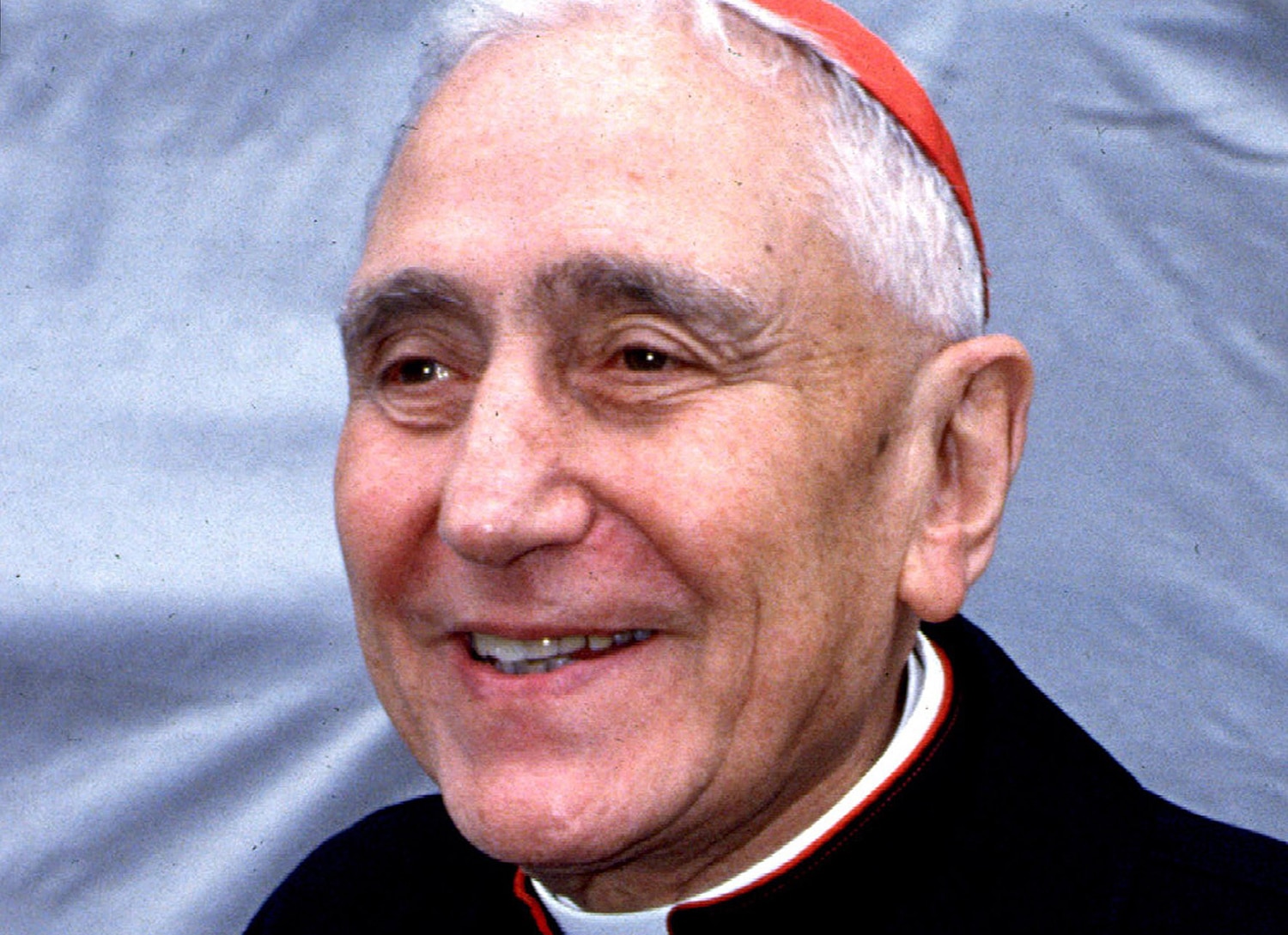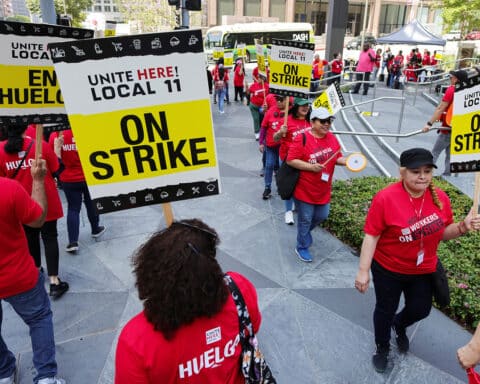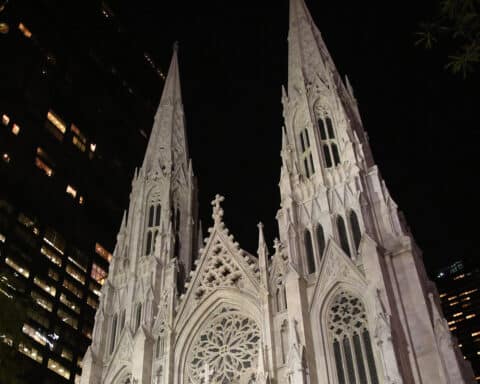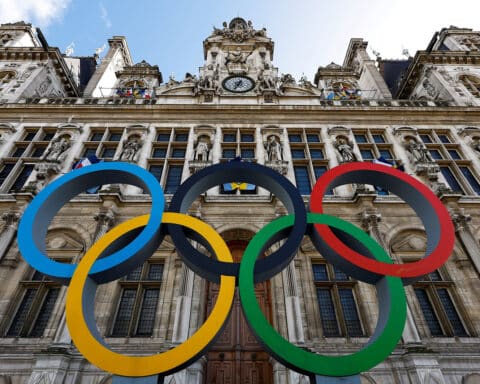BUENOS AIRES (OSV News) — Cardinal Eduardo Pironio has been beatified in his native Argentina, where he was remembered as “the prophet of hope,” who worked to implement the Second Vatican Council in Latin America and became known as “the cardinal of young people.”
He was also remembered as a prelate whose life and pastoral approach — focusing on young people and prioritizing the poor — influenced both the Argentine church and Pope Francis himself.
The cardinal was proclaimed blessed Dec. 16 in the plaza outside the Basilica of Our Lady of Luján — a shrine to the national patroness of Argentina — as thousands of clergy, religious and laity celebrated under rainy skies.
“We grant that the venerable servant of God, Eduardo Francisco Pironio, Cardinal of the Holy Roman Church, humble pastor, according to the spirit of the Second Vatican Council, witness of hope and evangelical patience, tireless defender of the cause of the poorest brothers, from now on be called blessed,” said Bishop Carlos Malfa of Chascomús, reading Pope Francis’ apostolic letter.
“He was a living example of fidelity to the Gospel, the church and the magisterium of the Pope,” said Spanish Cardinal Fernando Vérgez Alzaga, celebrant at the beatification Mass and Cardinal Pironio’s former personal secretary — a post he held for 23 years.
A ‘humble and zealous pastor’
Pope Francis remembered Cardinal Pironio as “a humble and zealous pastor,” during the Angelus prayer on Dec. 17, “a witness of hope, defender of the poor.”
“Fleeing all personalism, he communicated the truth of the Gospel and the integrity of its tradition. His spiritual life was nourished by Eucharistic piety, great Marian devotion and the veneration of the saints. He was a missionary by word and by example,” Cardinal Vérgez continued.
“There is a virtue that the cardinal lived in an extraordinary way, considering it an indispensable instrument of holiness and apostolate: humility, as the imitation and identification with Christ, meek and humble of heart. In fact, he had internalized the attitude of the Lord Jesus, who did not come to be served, but to serve,” he said.
Cardinal Pironio was born Dec. 3, 1920, as the 22nd child of Italian immigrants. He was ordained in 1943 and named an auxiliary bishop of La Plata in 1964 by St. Paul VI.
Implementing the Second Vatican Council
He was appointed bishop of Mar del Plata, 265 miles south of Buenos Aires, in 1972 and elected president of the Latin American bishops’ council — known as CELAM — that same year, having previously served as secretary-general.
Cardinal Pironio played a prominent role in the CELAM conference of 1968 in Medellín, Colombia, which contemplated the reception of the Second Vatican Council and produced a document outlining the “effective preference to the needy and poorest sectors.”
But he assumed his role as bishop of Mar del Plata amid tumult in Argentina.
An anti-communist, para-police force known as Triple A (Argentine Anticommunist Alliance) threatened him. María del Carmen Maggi, one of his collaborators and dean of humanities at the Catholic University of Mar del Plata, was kidnapped and murdered in 1975. Cardinal Pironio also received little support from his fellow bishops.
“He suffered the persecution of his Catholic activists in Mar del Plata in 1975 and with little support from other Argentine bishops,” Fortunato Mallimaci, an Argentine sociologist studying the Catholic Church, told OSV News.
“They painted the doors of churches saying he was a communist. That’s why Paul VI removed him from that city and brought him to Rome,” he said.
St. Paul VI elevated him to archbishop in 1975 and a year later named him prefect of the Vatican’s Congregation for Religious — which is today a Dicastery for Institutes of Consecrated Life and Societies of Apostolic Life. He was made a cardinal in 1976 and was among the electors in the 1978 conclaves that chose Pope John Paul I and St. John Paul II.
St. John Paul later appointed him president of the Pontifical Council for the Laity in 1984, a position he held for 12 years. Cardinal Pironio would play a key role in organizing World Youth Day, which was first held in Rome in 1985.
Remembering his predecessor, Cardinal Kevin Farrell, Prefect of the Dicastery for the Laity, the Family and Life said he is “particularly grateful to God for the beatification of Cardinal Pironio,” not only because he led the office Cardinal Farell now leads, but “also because Providence wanted me to be ordained a priest precisely by him forty-five years ago, on Christmas Eve 1978.”
“I am convinced that his prayers will assist me in my ministry and all those who work in the Dicastery to continue his work in the service of the laity and young people. I wholeheartedly join the Church in Argentina in thanking the Lord for having given us this father, this brother in the faith, this exemplary witness to the love of Christ,” Cardinal Farrell said.
“Pironio was very close to young people and his imprint is close to the style and vision of the church that (Pope) Francis represents today,” said Mariano De Vedia, religion writer at the Buenos Aires newspaper La Nación.
Pope Francis asked on Dec. 17 that “his example (may) help us to be a Church that goes out, that accompanies everyone on their way, especially the weakest.”
A miraculous healing
Cardinal Pironio passed away in 1998, having battled bone cancer for years.
Pope Francis prepared the way for Cardinal Pironio’s beatification in November by recognizing the miraculous recovery of an Argentine toddler, who swallowed toxic Christmas glitter in 2006 and was given no hope of healing. His family prayed to Cardinal Pironio for intervention and the boy recovered — something doctors considered inexplicable.
In 2008, the then-Cardinal Jorge Mario Bergoglio of Buenos Aires (now Pope Francis) wrote of Cardinal Pironio, “He opened a panorama of holiness to you from his profound humility. He opened horizons to you. You experienced that the door never closed to anyone. He demonstrated great patience. In this, he reflected God’s love for us,” according to Cardinal Vérgez.
Church observers see Cardinal Pironio’s influence in Pope Francis’ pontificate.
“The references that Francis makes to ‘the joy of the Gospel,’ which are expressed in Evangelii Gaudium, can be considered a continuity of Pironio’s message and style,” De Vedia said.
“His preferential commitment to young people was aimed at recovering the freshness and joy of the Gospel message.”





